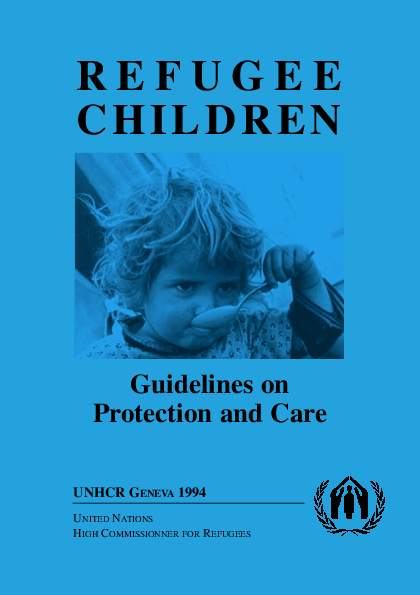
Manuals, Toolkits and Guidance
Refugee Children: Guidelines on protection and care
Publication year:
1994
English, German,Greek,Spanish
Format:
Publisher:
UNHCR, United Nations High Commissioner for Refugees
Refugee children face far greater dangers to their safety and wellbeing than the average child. The sudden and violent onset of emergencies, the disruption of families and community structures as well as the acute shortage of resources with which most refugees are confronted, deeply affect the physical and psychological well being of refugee children. It is a sad fact that infants and young children are often the earliest and most frequent victims of violence, disease and malnutrition which accompany population displacement and refugee outflows. In the aftermath of emergencies and in the search for solutions, the separation of families and familiar structures continue to affect adversely refugee children of all ages. Thus, helping refugee children to meet their physical and social needs often means providing support to their families and communities.
These are the concerns reflected in the Guidelines, which define the goals and objectives, the principles and practical measures for the protection and assistance of refugee children. By placing children in the context of the family and the community, the Guidelines focus attention on the children’s developmental needs, their gender and cultural framework, the special requirements of unaccompanied minors, and the particular problems which arise in the context of repatriation and reintegration.
Read full abstract
View & Download
Autodetected language
English
1 Documents
Other languages
German
1 Documents
Greek
1 Documents
Spanish
1 Documents
Document information
Content type
Rights
© Author/Publisher
Keywords
Found a mistake? Help us improve!
If you have noticed a document assigned to the wrong author or any other inaccuracies, let us know! Your feedback helps us keep our data accurate and useful for everyone.
Share
Link
